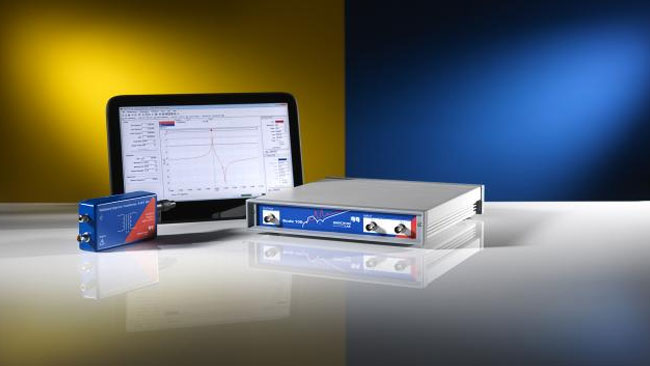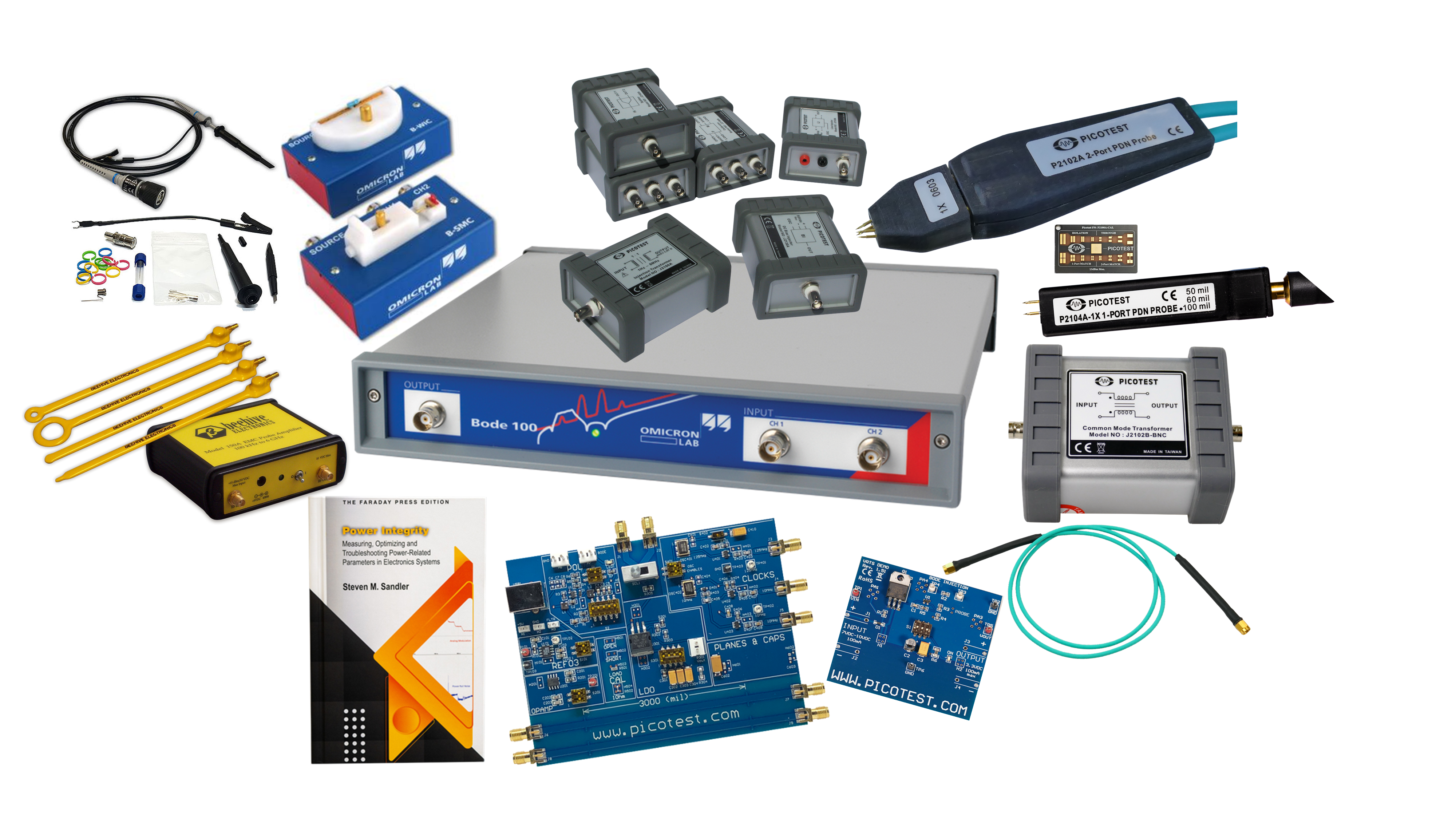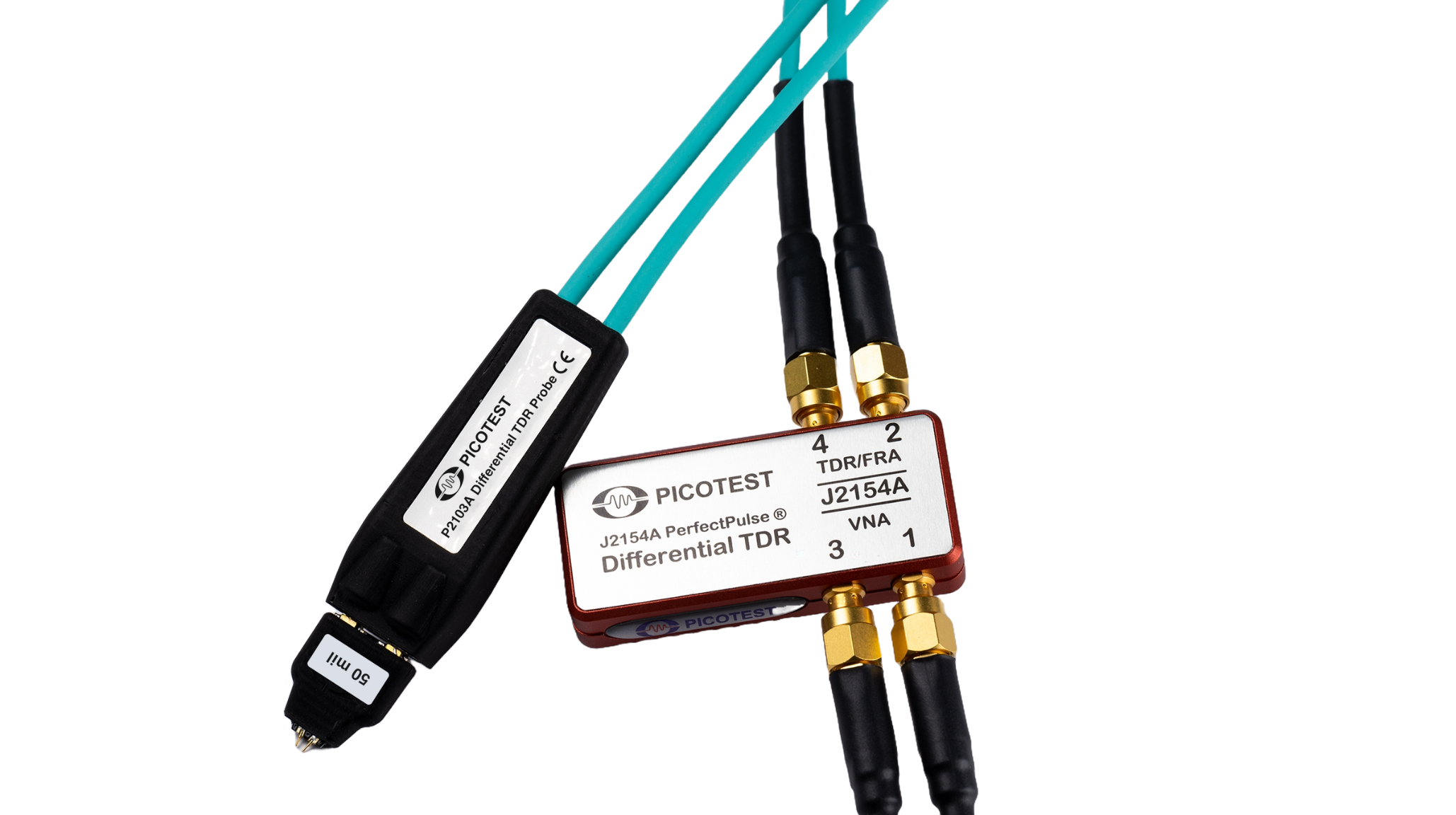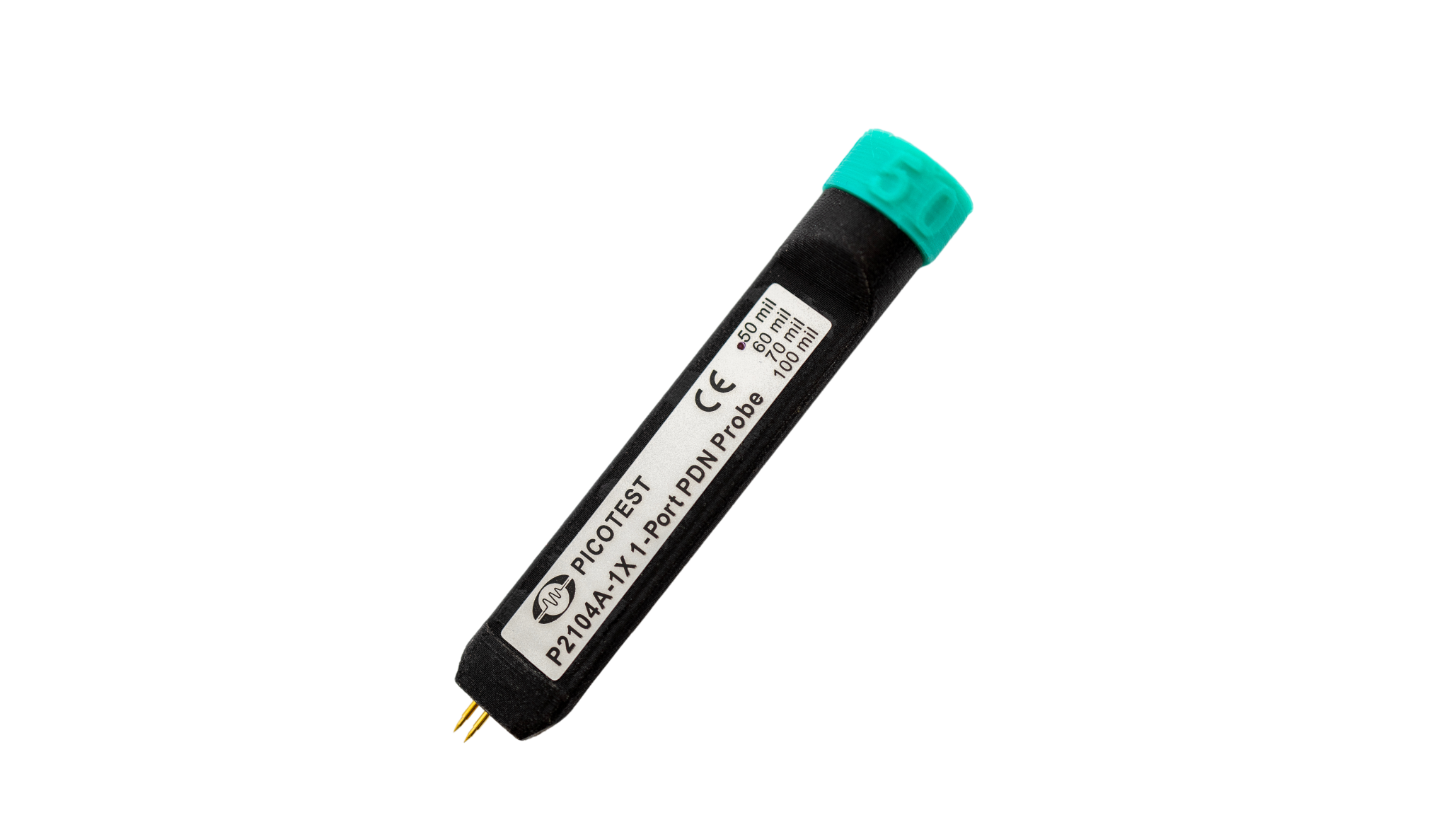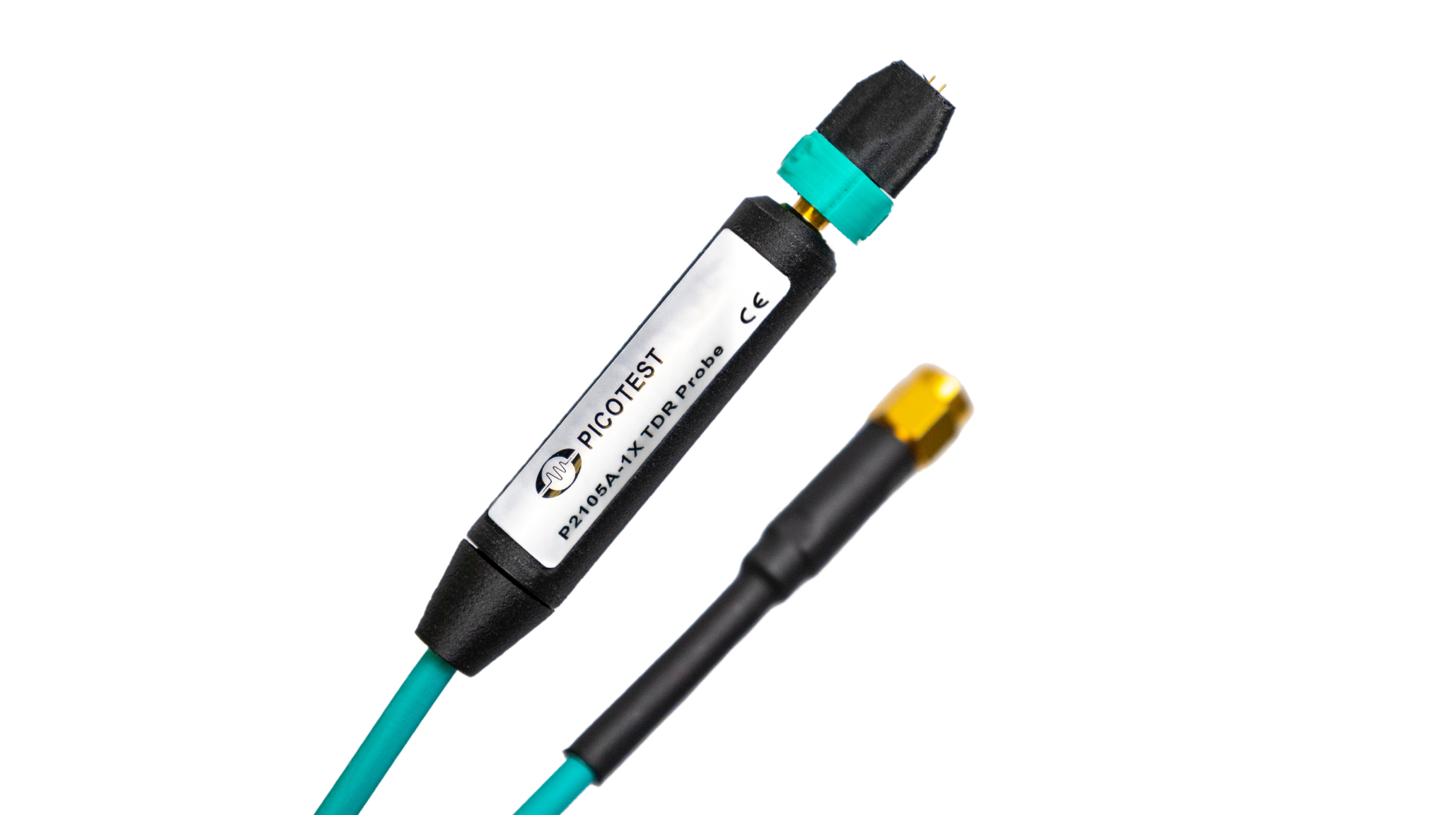Inductor Measurement Including DC Bias
J2121A High Power Line Injector Supports PSRR, Input Impedance, and DC Biased Inductor Testing
The most important component in a switching power supply besides the power IC is its power inductor. A power inductor has a high permeability core around which the windings are wound. It saturates when the current flowing through the conductors is larger than its saturation value. Saturation is a material property of the magnetic core. DC bias current through an inductor affects the inductance versus frequency plot. So, it is important to measure the inductance versus frequency under DC current bias.
The J2121A line injector enables inductance measurement using a 3-port configuration, using the Bode 100 vector network analyzer (VNA), as shown below. It combines the oscillator signal from a VNA with the DC current bias (from a power supply such as the Picotest P9610A or P9611A). The J2121A can be used to inject up to 20A of current at 400 V DC and has a measurement bandwidth of 100Hz – 1MHz. The P9610A can source up to 7A of current with a programming resolution of 0.21mA and P9611A can source up to 6A of current with a programming resolution of up to 1mA. For higher current, more than one supply can be paralleled. The J2121A includes a new 200mA power supply design (and an included 1 Ohm calibrator fixture), forced air cooling, and CE certification. The J2121A solution also replaces the need for a current probe, which would typically cost as much as the line injector itself.
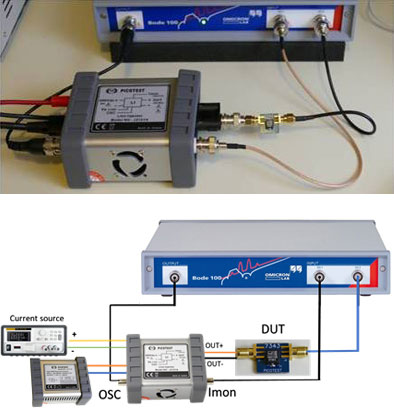
A 3.3uH shunt mounted inductor from the Picotest Power Integrity Parts Kit is connected to the output of the J2121A at one side of the inductor PCB. The CH2 voltage monitor is connected to the other side of the inductor PCB. The inductance can also be reported directly by the VNA. The scale here is sensitive at 200nH/div and clearly shows the inductance drop due to bias current (1Amp DC Red vs. 6Amp DC Blue). The DCR is seen to be 20mOhms.
How to Design for Power Integrity:
Measuring, Modeling, Simulating Capacitors and Inductors
Products
Articles & Documents
No post found!


